

At Spanish Express, we love to show our students the rich historical background of Barcelona, from its Muslim heritage to its deep-rooted Jewish history. Nestled in the heart of Barcelona’s Gothic Quarter, the Jewish Quarter, known as El Call, holds a rich and often overlooked history.
Once home to a thriving Jewish community, this area tells the story of resilience, culture, and an enduring legacy that shaped the city’s history. Today, wandering its narrow, labyrinthine streets offers a glimpse into medieval Barcelona and the vibrant Jewish life that flourished there for centuries.

Recently, I had the opportunity to explore El Call with Elisha, one of our SHIP students, who is Jewish and deeply proud of his origins. Walking through these historic streets with him added a personal and emotional dimension to the experience. Seeing his connection to the remnants of Barcelona’s Jewish past made the journey even more meaningful, as we reflected on the legacy of his ancestors and the perseverance of Jewish culture over the centuries.
A Broad Overview of Barcelona Jewish History
Early Jewish Presence and Establishment
Barcelona’s Jewish history dates back to the Roman era, but it was during the middle ages, specifically the 9th century, that a more organized Jewish community began to form. Jewish merchants, scholars, and artisans settled in the city, engaging in trade and intellectual pursuits. By the 11th century, Barcelona had a well-established Jewish Quarter, or El Call, which became a cultural and religious hub for Jews in Catalonia. The community played a crucial role in commerce, banking, medicine, and philosophy, contributing significantly to the city’s development.
The Golden Age of Jewish Life in Barcelona
During the 12th and 13th centuries, Jewish life in Barcelona flourished. This period saw the rise of prominent Jewish scholars, including Nahmanides (Ramban), a renowned philosopher, physician, and theologian. Jewish scholars translated classical works into Hebrew and Latin, enriching the intellectual climate of medieval Spain. The Jewish Quarter was home to synagogues, schools, and communal buildings, making it a vibrant center of Jewish life. Jews in Barcelona were granted protections under the Crown of Aragon, allowing them to thrive economically and socially.
Rising Tensions and the Decline of Jewish Communities
Despite periods of prosperity, tensions between Jews and Christians increased in the late 13th century. Economic competition, religious intolerance, and political instability led to growing resentment against the Jewish population. Anti-Jewish sentiment culminated in the 1391 pogroms, a devastating attack that led to mass killings and forced conversions. The once-thriving Jewish Quarter was destroyed, and many survivors either fled or converted to Christianity under duress. This marked the beginning of the decline of Jewish life in Barcelona.
The Spanish Civil War further impacted the Jewish community in Barcelona during the 1930s, prompting many Jews to flee to France and Palestine. The involvement of Nazi Germany and Fascist Italy in supporting Franco’s forces resulted in significant casualties and altered the lives of the Jewish population in the region.

The Expulsion of 1492 and its Impact
In 1492, the Alhambra Decree ordered the expulsion of all Jews from Spain. The decree, issued by King Ferdinand and Queen Isabella, forced thousands of Jews to leave Barcelona and the rest of Spain, stripping them of their homes, businesses, and community institutions. Many Jews sought refuge in North Africa, the Ottoman Empire, and other parts of Europe. Some converted to Christianity and became known as conversos (New Christians), though many secretly maintained their Jewish traditions. The Jewish presence in Barcelona was effectively erased, and El Call was repurposed for other uses.
Key Sites of Jewish Heritage in Barcelona
a. MUHBA El Call
The Museum of the History of Barcelona (MUHBA El Call) is dedicated to preserving the memory of Jewish life in medieval Barcelona. Located in the heart of the former Jewish Quarter, the museum displays historical artifacts, documents, and archaeological findings that provide insight into the daily lives of Barcelona’s Jewish community.
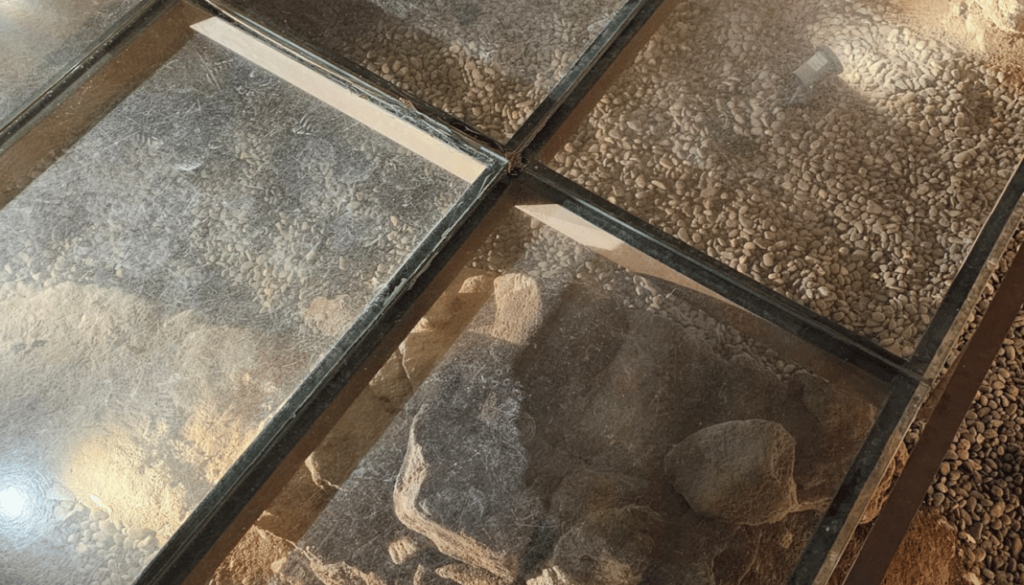
b. Ancient Synagogue of Barcelona (Sinagoga Major)
Situated on Carrer de Marlet, the Ancient Synagogue of Barcelona is one of the oldest synagogues in Europe. While much of the original structure has been altered over the centuries, it remains a powerful symbol of Jewish heritage in the city. Guided tours offer visitors a deeper understanding of its historical and religious significance.
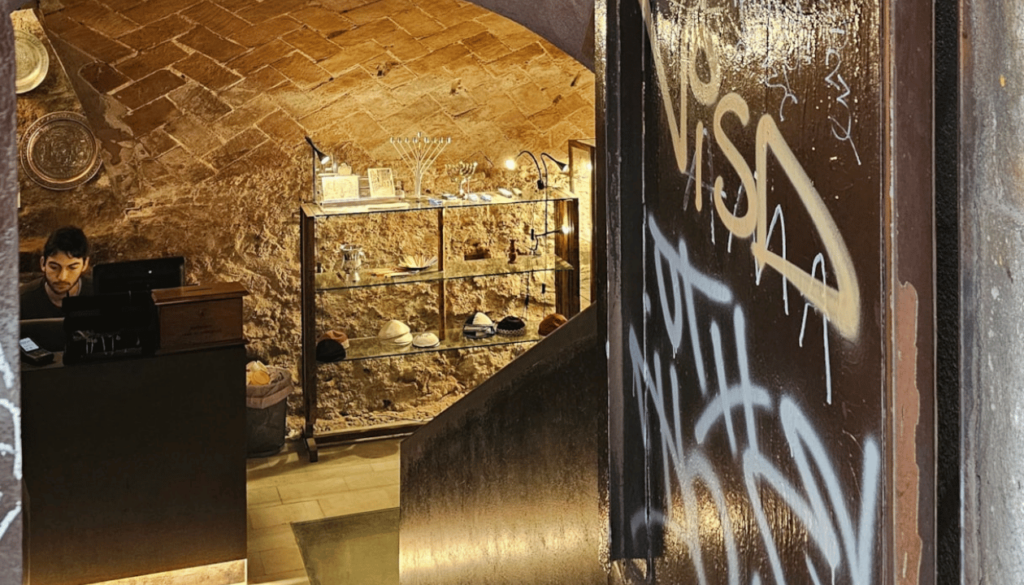
c. Carrer de Marlet and Hebrew Inscriptions
Carrer de Marlet is a narrow street that still bears traces of its Jewish past. Hebrew inscriptions can be found on ancient stone walls, serving as silent witnesses to the once-thriving Jewish presence in Barcelona. These remnants offer valuable insights into the history of the community.
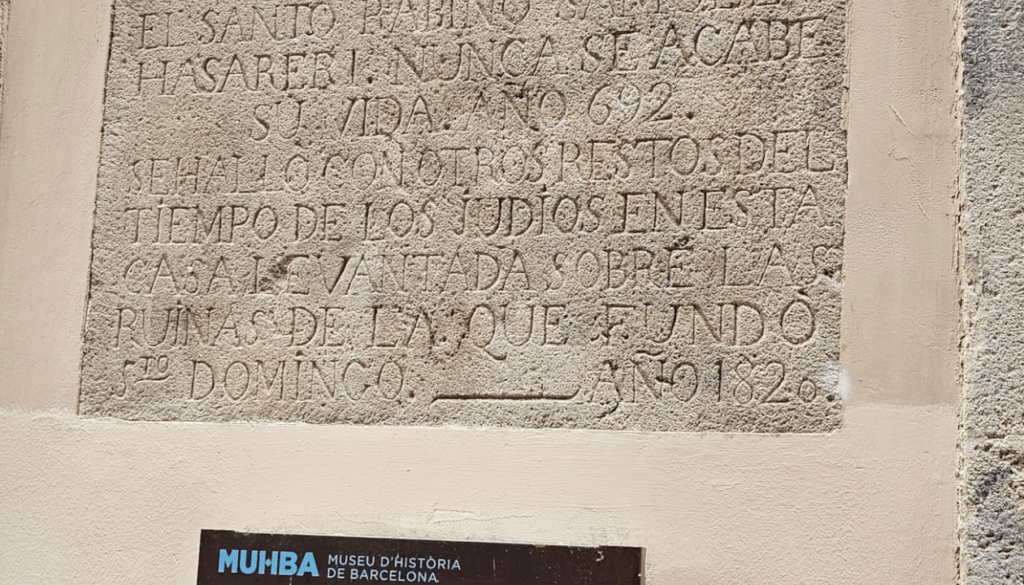
d. Plaça Sant Jaume and Jewish Leadership
Plaça Sant Jaume, now the political center of Barcelona, was once home to Jewish leaders who played a role in the governance of the city. The Jewish community had significant influence in commerce, administration, and diplomacy, shaping the development of medieval Barcelona.

e. Montjuïc: The Jewish Mountain
Montjuïc, meaning “Jewish Mountain” in medieval Catalan, was historically used as a Jewish cemetery. Only a few houses remain in the ancient El Call area, highlighting the remnants of the once-thriving Jewish culture in Barcelona. Many gravestones from Montjuïc have been found embedded in Barcelona’s medieval walls, repurposed for construction after the Jewish expulsion.

Jewish Influence on Barcelona’s Culture and Society
Jewish scholars, doctors, and merchants contributed immensely to Barcelona’s intellectual and economic development. Jewish doctors were highly regarded in medieval Catalonia, and Jewish scholars played a key role in translating classical texts. Elements of Jewish culture can still be found in Catalan language, architecture, and culinary traditions. Additionally, many crypto-Jewish (Marrano) families continued to practice their faith in secret, preserving Jewish traditions despite persecution.
Preservation of Jewish Heritage
The preservation of Jewish heritage in Barcelona is a vital aspect of the city’s cultural identity. Despite the destruction of the Jewish Quarter in 1391, remnants of the community’s rich history can still be explored. The city’s authorities and Jewish organizations have made concerted efforts to restore and preserve the remaining Jewish landmarks, such as the Sinagoga Major, one of the oldest synagogues in Europe. This ancient synagogue stands as a testament to the enduring legacy of Jewish culture in Barcelona, offering guided tours that delve into its historical and religious significance.
The European Association for the Preservation and Promotion of Jewish Culture and Heritage has also played a crucial role in these preservation efforts. This organization has worked tirelessly to restore and maintain the city’s Jewish landmarks, including the ancient Jewish cemetery of Montjuïc. Dating back to the 13th century, this cemetery is a significant site for the Jewish community, and its preservation is essential for maintaining the community’s cultural identity. The gravestones found here, some of which have been repurposed in the city’s medieval walls, offer a poignant reminder of the Jewish presence in Barcelona.
Furthermore, the Jewish community of Barcelona has taken proactive steps to preserve its heritage. The Comunidad Israelita de Barcelona has established a museum and cultural center that showcases the community’s history and culture. This center not only preserves artifacts and documents but also offers guided tours of the old Jewish Quarter, providing visitors with a glimpse into the community’s rich history. These efforts ensure that the legacy of Jewish life in Barcelona continues to be celebrated and remembered.

Rediscovery and Revival of Jewish Heritage
In recent decades, there has been renewed interest in Barcelona’s Jewish history. The upheavals of both World War I and World War II significantly impacted the Jewish community, leading to a re-emergence and increased organization in Barcelona. The city has undertaken efforts to restore and preserve Jewish heritage sites, recognizing their historical and cultural significance.
The Museum of Jewish History in Girona, located nearby, offers a broader perspective on Jewish life in Catalonia. Scholars and historians continue to uncover new details about Jewish life in medieval Barcelona, and efforts to educate the public about this rich history have increased.
Exploring Jewish Barcelona Today
Today, visitors can explore Barcelona’s Jewish history through guided walking tours and cultural events. Organizations dedicated to Jewish heritage work to promote awareness and restoration projects. The city’s Jewish community, though small, remains active, hosting religious services, cultural events, and educational programs. Barcelona’s Jewish history is not just a thing of the past—it continues to inspire and enrich the city’s diverse cultural fabric.
Exploring El Call is like peeling back the layers of time. While much of the medieval Jewish Quarter has been altered or repurposed, small details—Hebrew carvings, ancient walls, and restored sites—offer glimpses into a once-thriving community. Walking through these streets is not just a historical journey but a tribute to a people whose influence, though nearly erased, still echoes in Barcelona’s identity today.
At Spanish Express, we believe in uncovering these stories and sharing them with our students, helping them connect with Barcelona’s deep and diverse history. Whether you are a history enthusiast, a cultural explorer, or simply curious about Barcelona’s past, El Call is a fascinating testament to the resilience and legacy of Jewish life in Spain.

A Journey Through the Medieval Jewish Quarter: Connecting with the Past
One of the most memorable parts of Elisha’s week in Barcelona was our walk through the medieval Jewish quarter, a route that took us through the heart of the city’s Jewish history. Knowing that this was more than just a sightseeing experience for him—it was a personal connection to his heritage—I wanted to make sure he had the chance to explore the hidden stories within these ancient streets.
We started at Carrer de Sant Domènec del Call, the main street of the old Jewish quarter, where the remnants of a once-thriving Sephardic community still whisper their stories through the stone walls. I explained that “El Call,” as it’s known, was once home to scholars, merchants, and rabbis, and that despite centuries of change, traces of their presence remain.
As we walked, I encouraged Elisha to describe what he saw, felt, and thought—all in Spanish. This wasn’t just a history lesson; it was a way to engage with the language through real experiences.
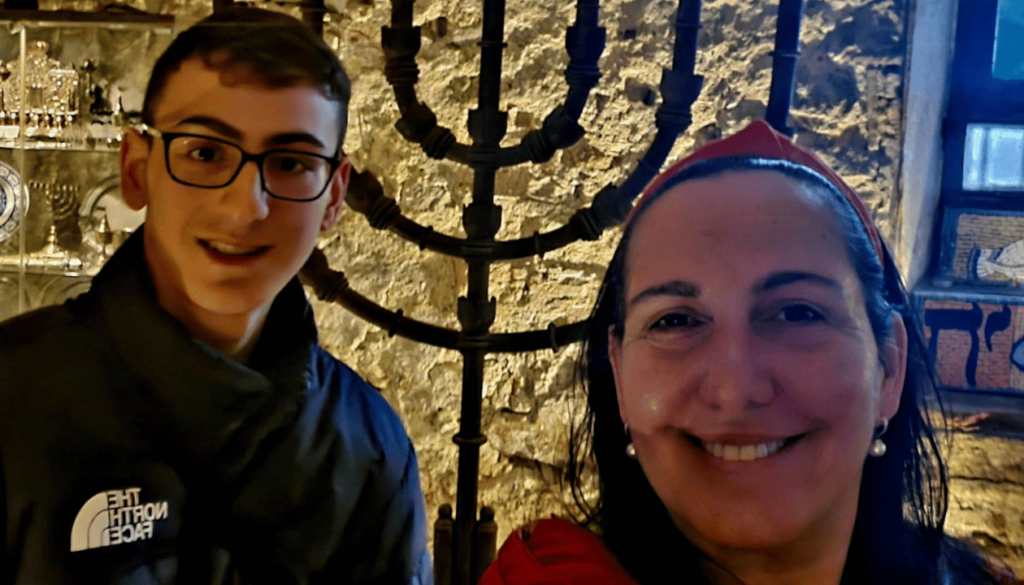
The Ancient Synagogue: Traces of a Lost Community
Our next stop was the Antigua Sinagoga Mayor, one of the oldest synagogues in Europe. The moment we stepped inside, the air changed—there was a quiet reverence, a sense of stepping into another time.
Elisha was captivated by the Hebrew inscriptions carved into medieval stones, and we read about the community that once gathered there for study and prayer. I asked him insightful questions about Judaism, reflecting on what life must have been like for the Jews of medieval Barcelona. This naturally led to a conversation about the expulsion of the Jews from Spain in 1492, a topic we discussed entirely in Spanish. Elisha’s knowledge about Judaism is extraordinary. He really takes pride of being Jewish and his community, which is admirable.
This was a powerful moment in his immersion experience. He wasn’t just practicing sentence structures and vocabulary; he was using Spanish to explore his identity, history, and culture—something no traditional classroom could offer.
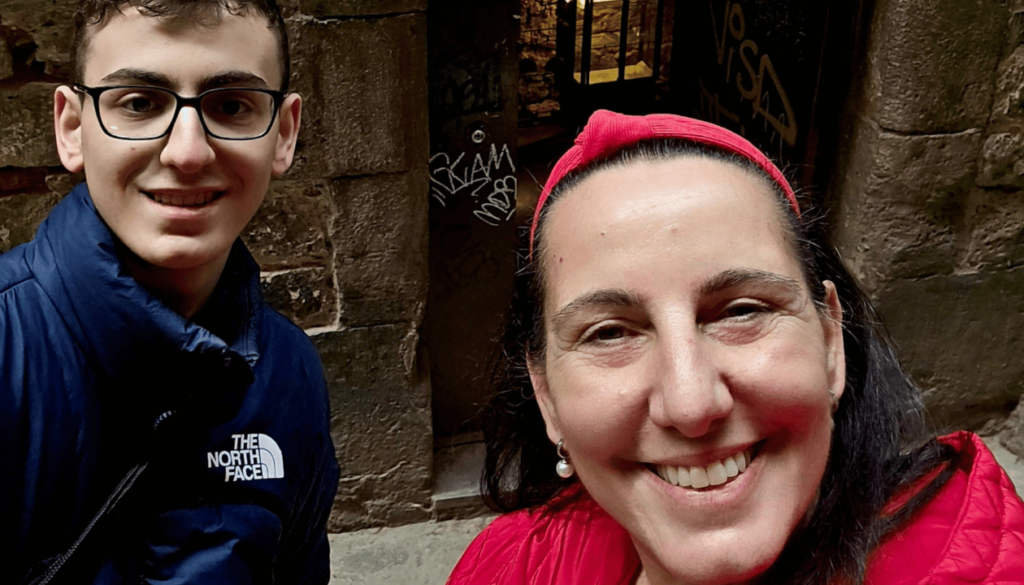
Hidden Symbols and Stories in the Stones
As we continued our route, I pointed out stones with faint Hebrew markings, which had been repurposed in Christian buildings after the expulsion. Some were built into walls in Plaça Sant Jaume, a silent but powerful reminder of Barcelona’s Jewish past.
Elisha was fascinated by these details, and we spent time deciphering the inscriptions and imagining the lives of those who once wrote them. We then wandered into Plaça del Rei, where medieval history blends with modern Barcelona, and we reflected on the endurance of Jewish heritage in Spain.

A Living Legacy: The Enduring Influence of Jewish Barcelona
In conclusion, the Jewish heritage in Barcelona is a rich and complex aspect of the city’s cultural identity. From the medieval Jewish Quarter to the present-day Jewish community, the city’s Jewish heritage is a testament to the community’s resilience and determination. Despite the challenges and obstacles faced by the community throughout history, the Jewish presence in Barcelona remains strong and vibrant.
The preservation of Jewish heritage in Barcelona is essential for maintaining the community’s cultural identity and ensuring its continued presence in the city. The efforts of the city’s authorities, Jewish organizations, and the European Association for the Preservation and Promotion of Jewish Culture and Heritage have been instrumental in preserving the community’s landmarks and cultural heritage. Sites like the old Jewish Quarter, the Sinagoga Major, and the ancient Jewish cemetery of Montjuïc are enduring symbols of the community’s historical significance.
As the Jewish community in Barcelona continues to thrive, it is essential to recognize and appreciate the community’s rich history and cultural significance. By preserving and promoting Jewish heritage, we can ensure that the community’s history and culture continue to be celebrated and appreciated for generations to come. The narrow streets of El Call, the ancient synagogues, and the Jewish tombstones embedded in the city’s walls all serve as reminders of a vibrant past that continues to inspire and enrich Barcelona’s diverse cultural fabric.

